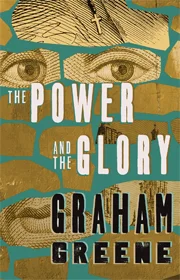
“The Power and the Glory” is Graham Greene’s novel set in 1930s Mexico during anti-Catholic persecution. The story follows an unnamed whisky priest, the last of his kind, hunted by the government. As he evades capture, the novel explores themes of sin, redemption, and faith in the face of adversity. Greene’s prose delves into the moral complexities of individuals, creating a classic work that intertwines politics, religion, and the human condition.
Read The Power and The Glory Flipbook:
Listen to The Power and The Glory Audiobook:
Title: The Power and the Glory
Author: Graham Greene
Genre: Fiction, specifically a novel categorized as a “Catholic novel” or “Catholic literature.”
Publication Date: 1940
Setting: The story is set in Mexico during the 1930s, a time when the Mexican government was hostile towards the Catholic Church.
Plot Summary:
• The novel follows an unnamed whisky priest on the run from the authorities in a Mexico where Catholicism is outlawed.
• The priest is the last remaining clergyman in a state where practicing Catholicism is a crime punishable by death.
• As he evades capture, the novel explores themes of sin, redemption, and the nature of faith.
Characters:
• Whisky Priest: The central character, an imperfect and conflicted priest grappling with his own sins.
• The Lieutenant: The antagonist, a government official determined to capture and eliminate the priest.
• Other Characters: Various individuals the priest encounters on his journey, each reflecting different aspects of humanity and faith.
Themes:
• Religious Persecution: Explores the challenges faced by the clergy and believers in a hostile environment.
• Moral Ambiguity: Highlights the complexities of morality and the choices individuals make in difficult circumstances.
• Spiritual Redemption: Examines the priest’s spiritual journey and quest for redemption despite his flaws.
Style:
• Greene’s writing style is often characterized by its psychological depth and exploration of moral and ethical dilemmas.
• The narrative is reflective and introspective, providing insights into the characters’ thoughts and motivations.
Legacy:
• “The Power and the Glory” is considered one of Graham Greene’s masterpieces and a classic of 20th-century literature.
• It has been praised for its exploration of faith, politics, and the human condition.
Adaptations:
• The novel has been adapted into various forms, including stage plays and radio dramas.
Working Title: The novel was initially titled “The Labyrinthine Ways” before Graham Greene settled on “The Power and the Glory.”
Inspiration: Greene drew inspiration from his travels to Mexico in the 1930s, where he witnessed the anti-Catholic sentiments and political turmoil that form the backdrop of the novel.
Film Adaptation: The book was adapted into a film in 1947, titled “The Fugitive.” However, due to production code restrictions at the time, the film altered certain aspects of the story to comply with censorship guidelines.
Critical Acclaim: Despite facing initial criticism for its portrayal of Catholicism, the novel gained widespread acclaim over time and is now considered one of Greene’s most significant works.
Catholic Church’s Reaction: The Catholic Church initially placed the novel on its list of prohibited books due to its portrayal of a flawed and sinful priest. However, later reassessments led to a more favorable view of the book.
Literary Influence: “The Power and the Glory” has influenced other works of literature and has been studied for its exploration of complex moral and religious themes.
Awards: While it didn’t win any major literary awards, the novel’s enduring popularity and critical acclaim have solidified its place in 20th-century literature.
Legacy: The novel has been referenced in various academic studies, and its impact on discussions about faith, morality, and human nature has endured over the decades.